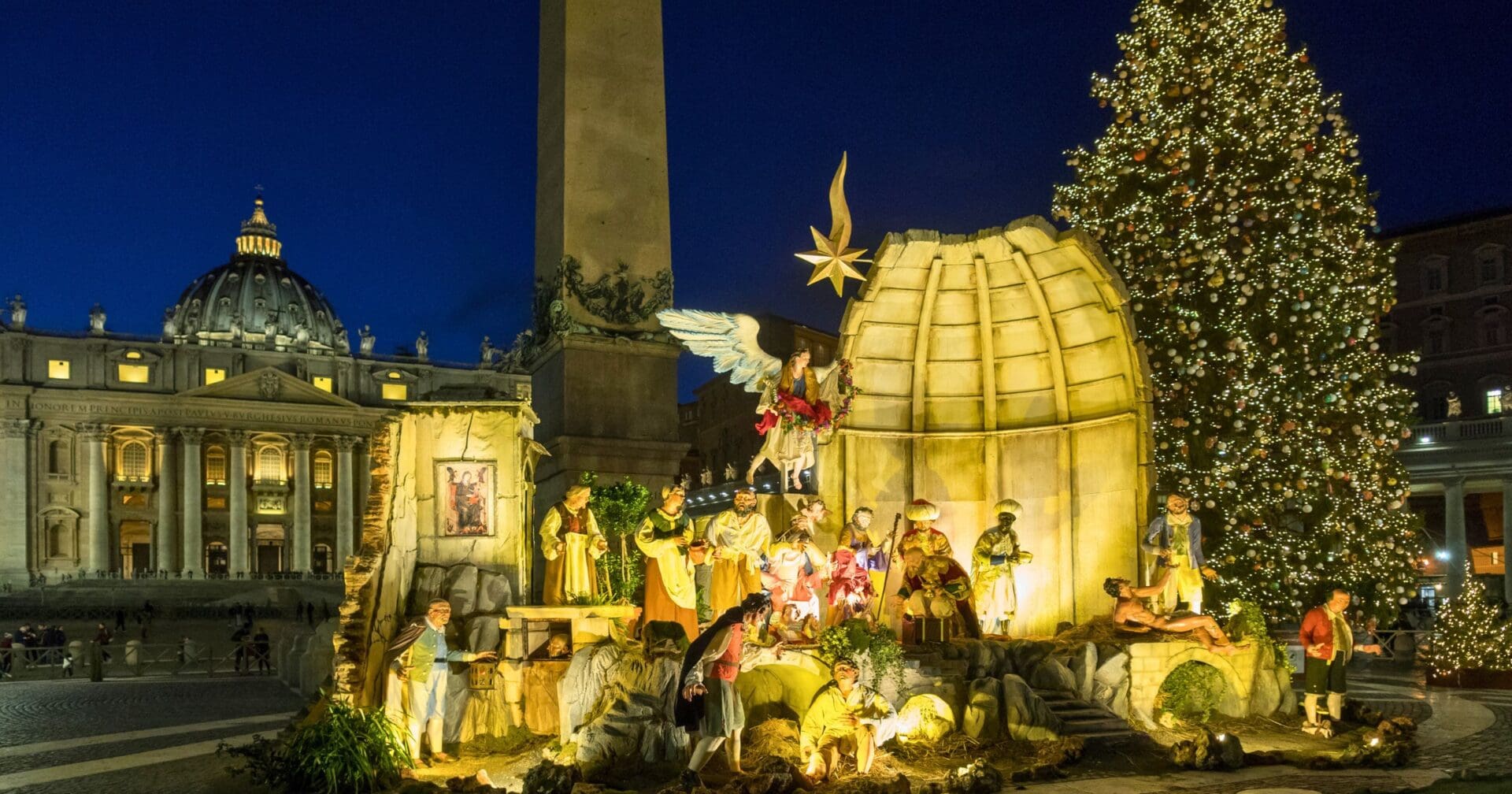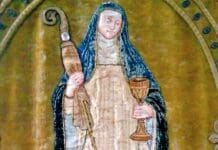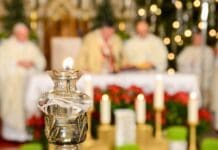Christmas is hardly imaginable without the ornamented spectacle found in homes across the world: the Christmas tree. Would it surprise you to learn that the age old tradition began with the swing of an axe by a Catholic saint?
Saint Boniface was born Winfrid the year 680 A.D. in England. He joined a Benedictine monastery before being commissioned by Pope Gregory II to be the missionary bishop of all of Germania. He traveled throughout Germany and was so effective in his evangelization he earned the title “Apostle of the Germans.” Not only was he a fortuitous evangelizer, he fought against paganism – and in doing so, started the Catholic tradition of the Christmas tree.
Sometime around the year 723, Saint Boniface was travelling in Hesse and knew of some pagans nearby who would make human sacrifices to the thunder-god Thor under the cover of night during winter at the base of their sacred oak tree. Approaching the pagan gathering with a small party of his fellow missionaries, he arrived in time to interrupt their human sacrifice. He proclaimed: “Here is the Thunder Oak, and here the cross of Christ shall break the hammer of the false god, Thor.” He grabbed an axe, and as tradition says, cut it down in one fell swoop.
Saint Boniface then pointed to a small fir tree behind the now felled mighty oak tree, and true to his title, used it as a tool for evangelization.
“This little tree, a young child of the forest, shall be your holy tree tonight. It is the wood of peace. It is the sign of an endless life, for its leaves are ever green. See how it points upward to heaven. Let this be called the tree of the Christ-child; gather about it, not in the wild wood, but in your own homes; there it will shelter no deeds of blood, but loving gifts and rites of kindness.”
In awe at the bishop’s preaching, the pagans gathered there accepted Christ and were baptized. Wood from the oak tree was used to build a small chapel dedicated in honor of Saint Peter. The former pagans began a new tradition that night, taking the small fir tree and others like it into their homes, decorating it with ornaments in celebration of the birth of Jesus Christ and the Faith that the Apostle of Germany brought to them.
In Saint Willibald’s Life of Saint Boniface written sometime in the 8th century, he recounts the legendary tale of the man who fell the mighty Thunder Oak of the pagan god Thor and begun a new, Catholic tradition: the Christmas tree.
“Now at that time many of the Hessians, brought under the Catholic faith and confirmed by the grace of the sevenfold spirit, received the laying on of hands; others indeed, not yet strengthened in soul, refused to accept in their entirety the lessons of the inviolate faith. Moreover some were wont secretly, some openly to sacrifice to trees and springs; some in secret, others openly practiced inspections of victims and divinations, legerdemain and incantations; some turned their attention to auguries and auspices and various sacrificial rites; while others, with sounder minds, abandoned all the profanations of heathenism, and committed none of these things. With the advice and counsel of these last, the saint attempted, in the place called Gaesmere, while the servants of God stood by his side, to fell a certain oak of extraordinary size, which is called, by an old name of the pagans, the Oak of Jupiter. And when in the strength of his steadfast heart he had cut the lower notch, there was present a great multitude of pagans, who in their souls were earnestly cursing the enemy of their gods. But when the fore side of the tree was notched only a little, suddenly the oak’s vast bulk, driven by a blast from above, crashed to the ground, shivering its crown of branches as it fell; and, as if by the gracious compensation of the Most High, it was also burst into four parts, and four trunks of huge size, equal in length, were seen, unwrought by the brethren who stood by. At this sight the pagans who before had cursed now, on the contrary, believed, and blessed the Lord, and put away their former reviling. Then moreover the most holy bishop, after taking counsel with the brethren, built from the timber of the tree wooden oratory, and dedicated it in honor of Saint Peter the apostle.”
Editorial credit: ValerioMei / Shutterstock.com


















I really this article thanks for this learning